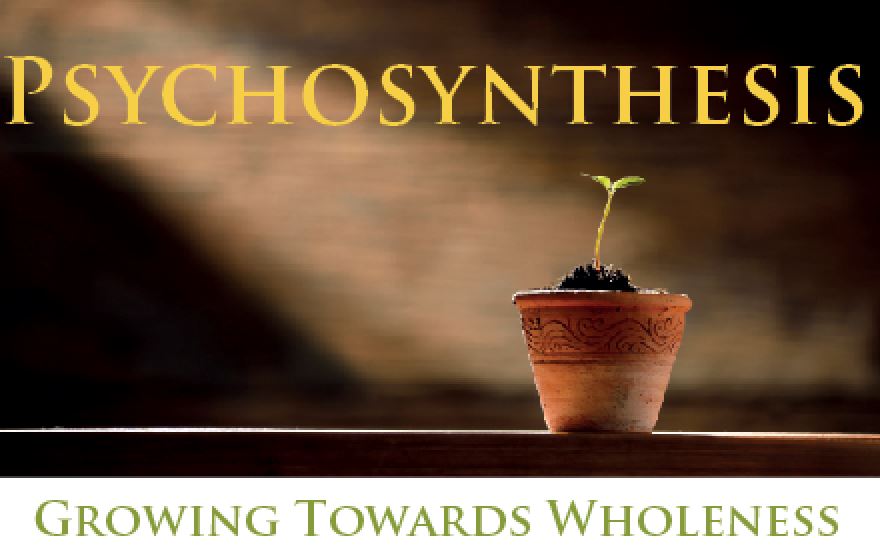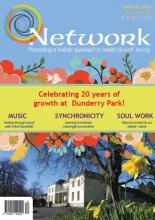Psychosynthesis - Growing towards Wholeness

Before I encountered psychosynthesis, founded by Italian psychiatrist Roberto Assagioli, I knew there were areas of my life that I had scarcely looked at, although I had been in and out of therapy throughout most of my late 20s and 30s. Emotionally, I felt I had little or no control over my feelings so that again and again I found myself collapsing into them. I knew I had a strong will to persevere but I didn’t know how to manage these powerful emotions without cutting out my feelings altogether or vanishing into a world of spiritual flight.
Psychosynthesis is classified as a transpersonal psychology which became popular in the 1970s, when the work of psychiatrists like Abraham Maslow and Carl Jung came to the fore. From the 1960s - where there had been an increasing emphasis on expanding consciousness - it was a natural development to include the transpersonal dimension in the psychological field. Essentially, our Western understanding of psychology has grown from the bottom upwards; emerging from the roots of behaviourism, through to psychoanalysis, cognitive therapy and humanistic Psychology which was already reaching out to embrace the transpersonal.
Although the ground level is important for any discipline, there is a point when it needs to grow and develop into its full potential. Up until Jung had developed his theory of the ‘collective unconscious’ and Maslow brought in the reality of ‘peak experiences’, the spiritual aspect of psychology was not really credited with any value. Rather, it was seen to leach energy away from a client’s inner process when dealing with past trauma and send them into what is sometimes termed ‘spiritual flight.’ This was why Assagioli insisted that ego development was a crucial part of preliminary training and development. Although psychosynthesis is held within the matrix of the spiritual, it still underscores the importance of a good foundation in ego psychology.
For example, if emerging therapists have not dealt with their own historical wounds which is invariably the reason they want to be counsellors in the first place, their own boundaries are too weak to enable clients to find their own boundaries.
Psychosynthesis is unique in that it places emphasis on the Self, the spiritual aspect of our makeup, as well as the everyday ‘self’ which represents the personality.
Psychosynthesis is unique in that it places emphasis on the Self, the spiritual aspect of our makeup, as well as the everyday ‘self’ which represents the personality. This personal self individualizes to become the conscious ‘I’ when it makes choices and becomes self-aware. The transpersonal Self is able to perceive the vast area of untapped potential within the client. Building on this context is the potential for relationship which includes the client’s internal process (intrapsychic) and the ability to form relationship with others in the world (interpersonal). The potential for relationship will be explored in the therapy room, not just in the client’s relationship with the world, but in the dyadic connection with their therapist.
The other unique component of psychosynthesis is known as the Disidentification Exercise which is used extensively throughout the therapeutic alliance with clients and those undergoing training. By using this simple exercise consistently, either at the beginning of the day or when feeling overwhelmed by a seemingly endless draining on our time and energy, it is possible to ‘disidentify’ from the plethora of emotional demands which plague us with uncomfortable regularity.
I have a body, but I am not my body
I have emotions, but I am not my emotions
I have a mind, but I am not my mind
The final affirmation is one of identification:
I recognise and affirm that I am a centre of pure self-consciousness and will.
These affirmations, practised daily, can enable us to separate ourselves from the, sometimes, overwhelming processes affecting our conscious world. Personally, I have found this simple exercise incredibly powerful in developing an ability to harness a certain degree of detachment from both internal and outward processes.
Carried out on a regular basis, preferable daily, the exercise activates an internal progress which brings awareness and opens consciousness both subjectively and objectively. I have found this to be an excellent gateway to meditation as it stills the mind and expands consciousness.
Similarly, until we begin to work with our fragmented will, we cannot manage our feelings or thoughts because they have been used to running rampant, underlining the impression that it is impossible to break free from them. For anyone who is creative or wanting to develop their potential in this area, psychosynthesis enables one to explore this vast untouched area of ourselves through imagery, symbols and visualization exercises. Imagery speaks to the mammalian brain which stores memories and thinks in pictures.
Perhaps one of the most accessible and well known functions of psychosynthesis is to recognise parts of ourselves that we use on a daily basis, yet through over-familiarity, may not be aware of. Assagioli referred to these constellations of energy as ‘sub-personalities’. For example, we may think we know a colleague or friend well until they encounter a person or experience which activates a previously ‘hidden’ subpersonality. Just to illustrate here: Simon, a maths student, may appear to be calm and quite passive, and then someone brings him in touch with hidden depths of rage by belittling a subject which lies close to his heart such as caring for the local environment or abortion, or war. This is when someone we thought we knew can turn into a ‘Crusader’ or ‘Judge’, admonishing the person who has opened up the subject. Ironically, without a certain amount of self-awareness, we are unable to recognise our own sub-personalities, although the more salient ones may be more accessible. If we are unaware of these aspects of ourselves, it can come as some surprise, when we later reflect on our behaviour.
Subpersonalities stay in the background reflecting on what people are saying, but then, when certain emotive ‘buttons’ are pushed, out they pop in full force. Basically, subpersonalities are there to protect the core of the Self. Yet, it is only possible to gain access to their constellation of behaviour if we have a strong ‘observing self’. This is known as the ‘I’. Although these subpersonalities may be visible to others around us, they are often not visible to ourselves. We may feel we have awareness around what is being activated in us, yet shame may cause us to become defensive towards the person who gave us insight into that particular motor.
Until we, as individuals, are willing to step outside a particular subpersonality and become aware of the greater self, which in psychosynthesis is referred to as the ‘Self’, we deny ourselves opening up to our full potential. The very real fear of losing control can erect defences which not only bar us from contact with the Self but also affect our relationship with others.
Naming and finding our subpersonalities takes a certain amount of self-awareness. In fact, asking someone we trust for feedback on our behaviour can offer valuable insight into the parts of ourselves which are more dominant. The most common subpersonalities such as the ‘Clown’, ‘Controller’, ‘Rebel’, and ‘Protector’ are usually more directly accessible to us, depending on how self-aware we are.
Rather than experience shame towards them, when our psychological buttons have been pushed, we can become conscious of them, accept them and enter dialogue with them through a psychosynthesis therapist. Instead of feeling ashamed of these seemingly disparate parts of our being we can instead learn to recognise their historical aspects in our life.
Assagioli believed that these subpersonalities have kept us safe at certain critical times in our life, particularly in our formative years. In fact, rather than becoming ambivalent towards them, we can begin to accept them and with the aid of a counsellor, develop an inner dialogue with them.
One of the ways, we can distance and therefore accept a particular personality, is by simple acceptance rather than denial which will make them more ambivalent! A psychosynthesis saying that I can relate to is: what is denied rules.
It has been said that psychosynthesis resonates with the level of the heart. As time goes by, and we become more spiritually and psychologically aware, the mind and heart begin to work in tandem to realize a vision or work of value. More than anything, psychosynthesis holds the potential to move us from a position of little or no choice, to one of will and integration. At some point, we realize that taking responsibility for our lives, rather than blaming it on past and present outside conditions, becomes empowering rather than belittling.
Stephanie was born in London and for the last 13 years has lived on the edge of a beautiful Cumbrian Peninsular near Barrow in Furness. While working in the NHS, she studied for a Master’s Degree in Applied Psychosynthesis. She is the author of several books including ‘Psychosynthesis: A Psychospiritual Psychology for Today’, ‘Depression: Understanding the Black Dog’.
Latest Issue
Upcoming Events
-
17/04/2020 to 26/04/2020
-
18/04/2020
-
23/04/2020
-
15/05/2020 to 23/05/2020
-
16/05/2020 to 17/05/2020
Recent Articles
Article Archive
- November 2014 (1)
- January 2015 (2)
- February 2015 (2)
- April 2015 (3)
- May 2015 (4)
- June 2015 (9)
- August 2015 (5)
- October 2015 (2)
- November 2015 (1)
- January 2016 (8)

